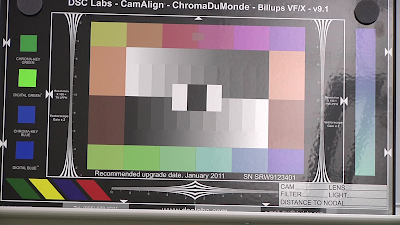Monday, April 27, 2009
Swanky Retro-Future Diamond Heist
Here's a preview for a neat green-screen based action flic. All the effects were done in After Effects. Could we do better?
Via Boing Boing
Thursday, April 16, 2009
Extracting Images From Movies

We now have access (or soon will) to nice (as in clean) moving pictures thanks to our Panasonic AVCHD camera. Now, we need to hack those images! What we want is a simple utility to extract the frames from our .MTS files. It is important to realize that the .MTS file is really just an MPEG4, therefore if you are having problems loading it, you might just try a new file extension. After reviewing several tools I have found one that works just as we need, FFMPEG. It is a cross platform, command line tool that can convert nearly any movie format to any other, including a simple frame dump (what we want). Much thanks to Jeffery Bowles (an Advanced Graphics 413 superstar) for a nice, short description of getting it going on a mac:
MTS files are just mpeg4 files. The command line utility ffmpeg will let you extract the frames:
Building:
svn checkout svn://svn.ffmpeg.org/ffmpeg/trunk ffmpeg
cd ffmpeg
./configure
make && make install
Example usage with an HD camera
ffmpeg -i 00000.MTS -s hd1080 -f image2 waa-%03d.png
Note: the %03d bit above means each successive frame should be numbered using 3 digits. That is, the first frame will be waa-001.png the next will be waa-002.png and so on, up to our last frame waa-999.png.
Wednesday, April 8, 2009
First Movie
The Library of Congress has begun placing important historical footage on YouTube. Above is the VERY FIRST moving picture, of a man sneezing. Created by Edison Labs in 1893, it used a device called the Kinetograph. This research cost only $13,000 in today's dollars.
Via Wired
Monday, April 6, 2009
Aiptex Camera Test Shot
-- 400x246 reference image of DSC checker from their website.

-- Testing the Aiptex mini-hd camera. My office, 3pm south and eastern light. 720p-30fps.

You can click on the images to see them full size. Overall, it isn't clear that the Aiptex HD really provides much advantage over SD. This is a case of you get what you pay for. The reference image (top) is effectively SD resolution, whereas the Aiptex shot is 720p, which one has better image quality? How do you rate image quality? What are the factors you are using to judge?

-- Testing the Aiptex mini-hd camera. My office, 3pm south and eastern light. 720p-30fps.

You can click on the images to see them full size. Overall, it isn't clear that the Aiptex HD really provides much advantage over SD. This is a case of you get what you pay for. The reference image (top) is effectively SD resolution, whereas the Aiptex shot is 720p, which one has better image quality? How do you rate image quality? What are the factors you are using to judge?
Subscribe to:
Comments (Atom)